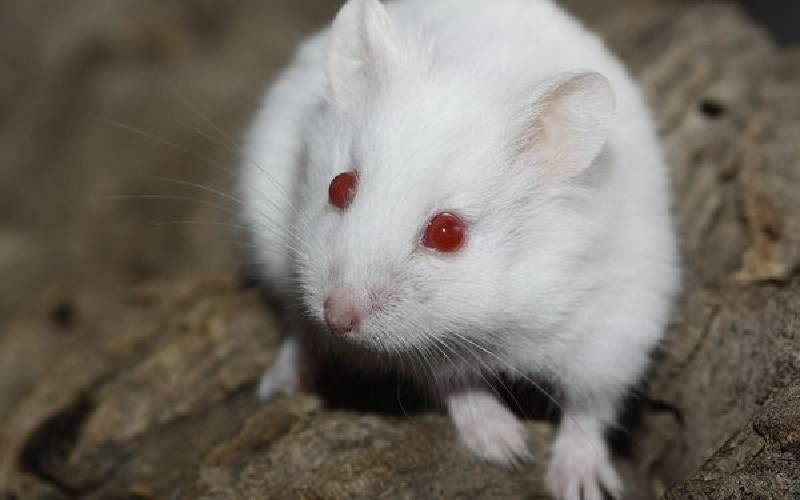hamsterhappy.co.uk is a participant in the Amazon Services LLC Associates Program and other affiliate advertising programs designed to provide a means for us to earn fees by linking to Amazon.com and affiliated sites. Affiliate links may be used on this page and in hamsterhappy.co.uk articles, but they do not impact on the price that you pay and they do help me to get this information to you for free. Read my privacy policy for more information regarding affiliates.
When it comes to choosing a new hamster, you want to make sure you get the one that is absolutely perfect for you. After all, they are going to be your friend, living in your home, and depending on you for hopefully the next couple of years and so it is super important to get it right. With this in mind a lot of people stay clear of albino hamsters despite their gorgeous white coats, worried that they will be much more effort to look after or will have health problems that they won’t be able to handle.
The good news is you have absolutely nothing to worry about! Even full albino hamsters (which are rare as we will discuss below), unless they are the incredibly rare Anopthalmic white hamsters which you will recognise in an instant, are no more work than regular hamsters of their breed. This means if you, like us, find these little snowy furballs completely adorable, you absolutely go right ahead!
What are albino hamsters?
In reality most hamsters that get called albino are simply white in appearance and not in fact completely albino. What they share however is a slight gene variation that makes them appear white, and so often all get lumped in the albino category!
These gene variations are:
The dominant spotting gene which covers a hamster in large white patches that contain no pigment making cells. While sometimes these hamsters still have small patches of colour they often appear completely white to us.
The acromelanic gene which makes hamsters partially albino, giving them white fur and pink eyes but still keeping fleshy paws and ears (adorable!)
The albino gene creates the only true albino hamsters and can only occur in Campbell’s dwarf hamsters, making them extra special.
The white bellied gene gives hamsters a snowy white belly to make them even more cuddly, but unfortunately if two hamsters with this gene breed they can give birth to a Anopthalmic white hamster.
The Anopthalmic white hamster is the only albino hamster that isn’t completely healthy, and as we will discuss below they have special health needs which need to be taken into consideration.
Are albino hamsters healthy?
As mentioned above, almost all albino hamsters are absolutely healthy and so you don’t need to worry about them any more than a normal hamster and provide the exact same care.
The only exception is the Anopthalmic white hamster. Unfortunately, these little creatures are born with no eyes and tend to have other health issues and much shorter lives. Because they have no eyes however they are instantly recognisable, and so combined with the fact that they are incredibly rare, you would find it impossible to get an Anopthalmic white hamster without deliberately choosing it, which we advise only for more experienced hamster owners.
In general though you have nothing to worry about and shouldn’t let healthy concerns hold you back!
How to care for albino hamsters?
Like with health concerns, for almost all albino hamsters you have absolutely no special considerations to make and simply carry on treating your hamster as you would any other and get on with making their life as enjoyable as you possibly can.
With all this in mind we hope you will consider an albino next time you are looking for a new furry friend! You can read more about the other hamster breeds and Chinese Hamsters on our blog.



2 thoughts on “Albino Hamsters: Are They Right for You?”